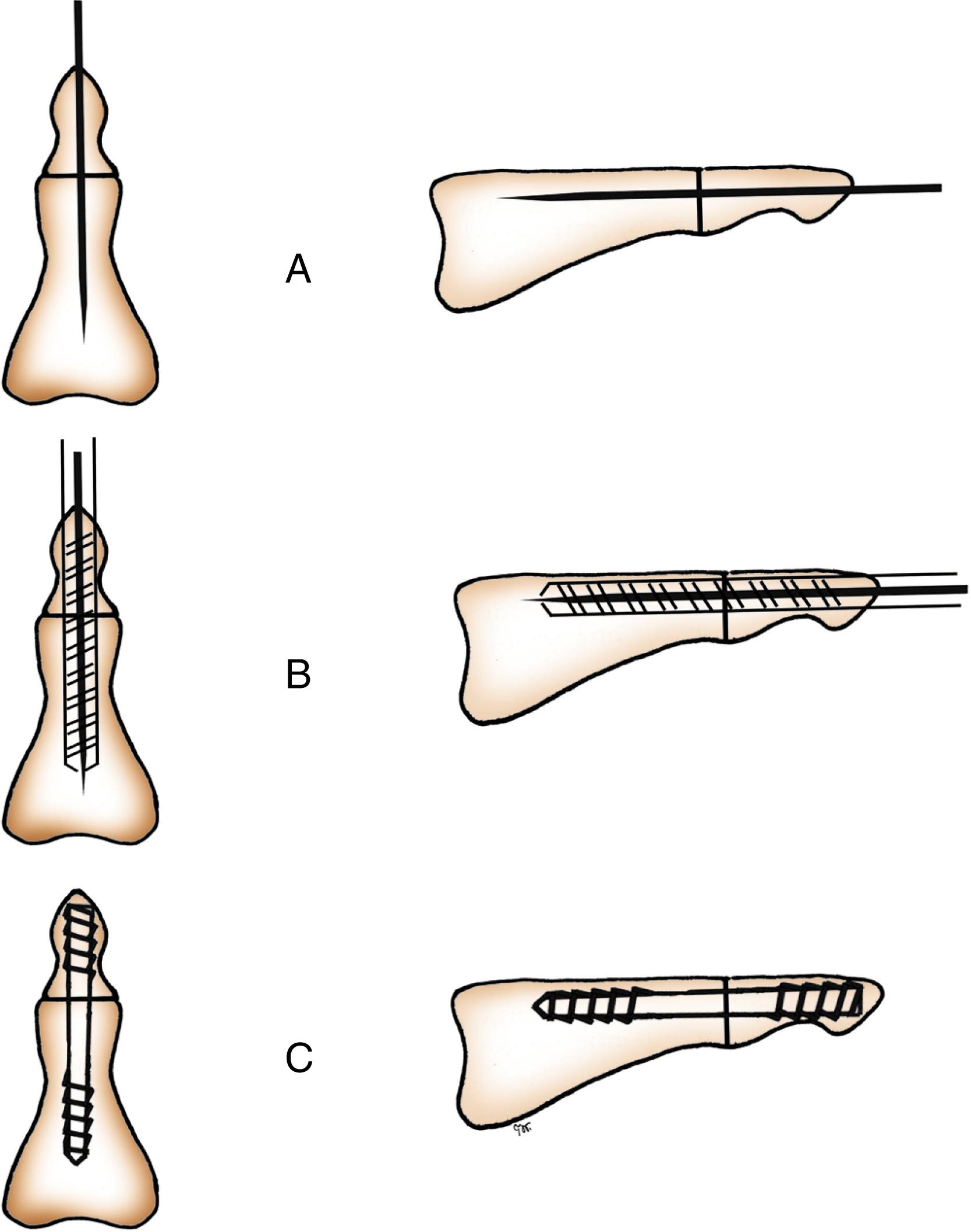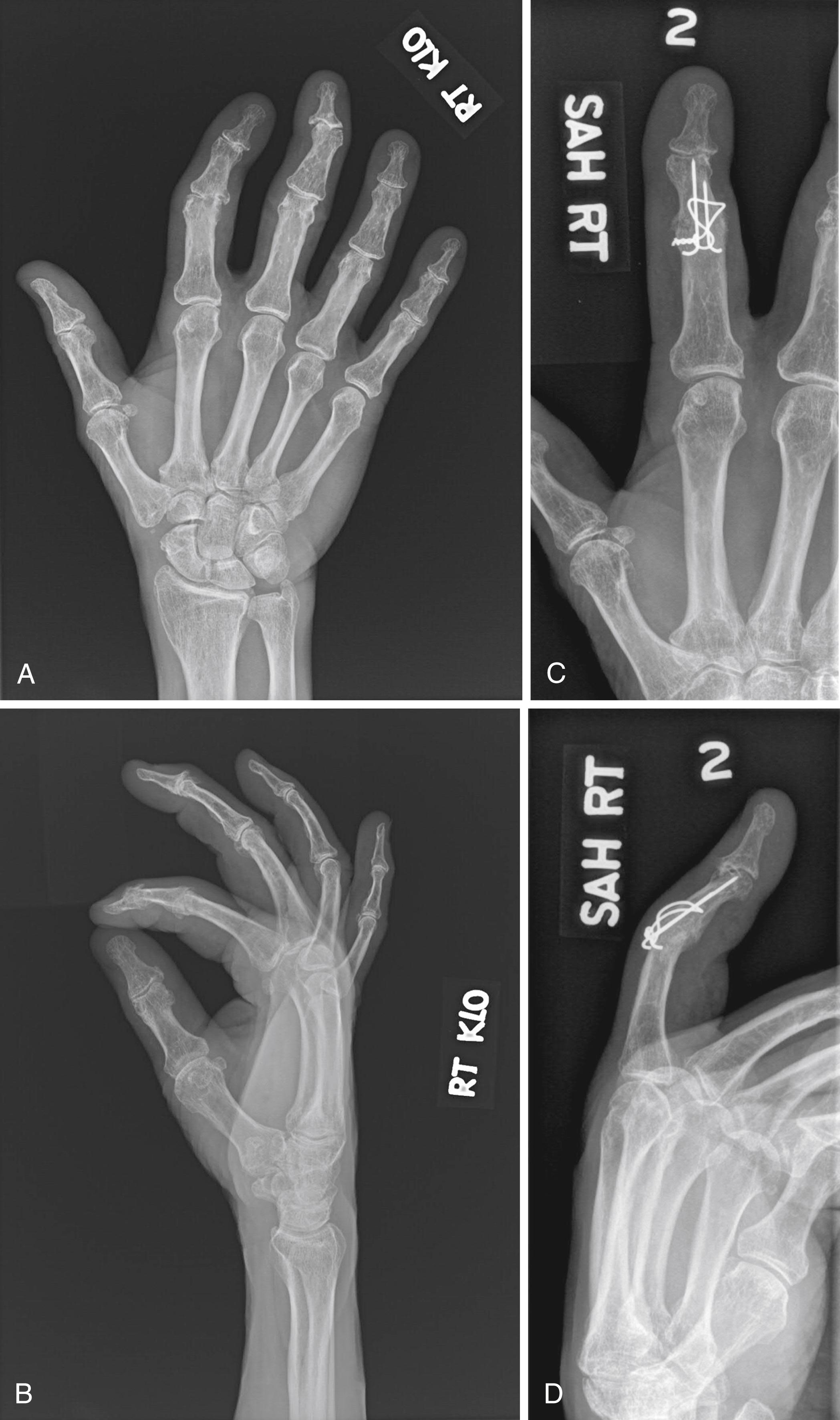Physical Address
304 North Cardinal St.
Dorchester Center, MA 02124
Osteoarthritis (OA) is the most common debilitating joint disorder worldwide, and its prevalence is likely to increase as life expectancy increases, creating a substantial economic burden. Risk factors such as sex, radiographic features, and scintigraphy have not been specifically associated with the condition. Commonly, patients will report pain, decreased function, deformity, and challenges undertaking simple tasks such as activities of daily living as well as essential occupational tasks.
As patients age, the progressive wear and tear of the cartilage and bone compromise the overall joint integrity. As osteoarthritis develops and progresses, joint reconstruction may become a reasonable option. In this patient population, thumb carpometacarpal (CMC) reconstruction is among the most commonly performed surgeries, and while arthrodesis of the small joints of the hand remains a predictable and durable approach, arthroplasty procedures have become more popular in recent decades.
Physical examination starts with careful inspection and palpation of the involved digits. Joint swelling, pain, and instability can be found at the metacarpophalangeal (MCP) joint, the proximal interphalangeal (PIP) joint and the distal interphalangeal (DIP) joint. Inflammation associated with osteoarthritis can produce erythema, warmth, effusion, and soft tissue swelling. A more distinguishing feature is the presence of Bouchard and Heberden nodes at the PIP and DIP, respectively. The range of motion may also be restricted due to concomitant MCP or PIP flexion contracture. Furthermore, the tendon integrity may be compromised, especially of the extensor tendons, with ulnar subluxation at the MCP secondary to failure of the sagittal bands. However, this is more commonly recognized in inflammatory disorders such as rheumatoid arthritis of the hand.
Multiple modalities of imaging can be used to assess osteoarthritis of the small joints of the hand. A 3-view radiograph, including PA, lateral, and oblique angles, are the views preferred for imaging patients suspected of having osteoarthritis of the hand. Computed tomography (CT) and magnetic resonance imaging (MRI) are rarely used for assessment of MCP, PIP, and DIP OA with the possible exception of the CT evaluation of intraarticular fracture malunion or the MRI assessment of articular cartilage. Additionally, radiographic scores do not precisely correlate with clinical evaluation.
Due to the diverse presentation, OA treatment is tailored to specific individual needs. Nonoperative treatment options include education about hand therapy techniques to protect hand joints during activities of daily living. Heat modalities, orthoses, gloves, as well as pharmacological agents such as paracetamol/acetaminophen, nonsteroidal antiinflammatory agents (NSAIDs) and intraarticular corticoid injections , may also be of therapeutic benefit. Kroon et al performed a systematic review and meta-analysis on the topic and found that the data indicated that intraarticular steroid injection might be effective in interphalangeal joint OA, but no compelling evidence has been presented. Similarly, strengthening exercises under the supervision of a hand therapist are commonly prescribed. However, as indicated by Magni et al in a meta-analysis published in 2017, despite low-level evidence that exercise may reduce joint stiffness and pain, there is no definite evidence showing that resistance training carries any substantial benefit on hand OA pain and overall hand joint function.
Indications for DIP joint arthrodesis include pain related to either primary degenerative arthritis or posttraumatic arthritis. Contraindications include active infection or an open wound over the joint, atrophic skin, and digital ischemia. Dickson et al highlight three essential considerations that will help with surgical planning:
The angle of arthrodesis – typically no or slight flexion and fixation with a variable pitch compression screw
Adequate bone stock
Size of the distal phalanx – important when considering compression screw fixation as threads of the variable pitch compression screw are at risk to cut out dorsally, potentially damaging the nail bed and ultimately producing an unsightly nail plate
Fowler et al recommend using Kirschner wires (K-wires) and a single loop of surgical steel wire if the distal phalanx diameter is less than 2 mm larger than the width of the variable pitch compression screw to be used.
The procedure can be performed under regional or general anesthesia. Through a skin H incision, the terminal tendon is transversely incised, and the joint is exposed. Using a rongeur or a 2-mm high-speed bur, the articular cartilage is denuded, and a flush contact surface is created. Either K-wires, K-wires with a surgical steel wire loop or a headless variable pitch compression screw ( Fig. 57.1 ) can be used to achieve appropriate fixation. Care is taken to avoid inside-out injury of the nail bed which may lead to nail plate deformity. Complications include infected and aseptic nonunions, nail deformity, and prominent hardware distally at the tip of the finger.

Indications for PIP arthrodesis include symptomatic idiopathic or posttraumatic osteoarthritis. Contraindications include infection, inadequate bone stock, and poor skin envelope.
The procedure can be performed under regional or general anesthesia. A longitudinal skin incision is made on skin and extensor mechanism. The articular surface is visualized and the collateral ligaments released. An oscillating saw is then used to cut the bone just proximal to the condylar flares of the proximal phalanx and just distal to the articular surface of the middle phalanx. Only a very small wafer of bone should be removed from the proximal aspect of the middle phalanx. It is essential to make these cuts perpendicular to the longitudinal axis of the digit to prevent digit angulation.
K-wire figure-of-8 tension band wire technique is generally preferred. The degenerative articular surfaces of the PIP joint are osteotomized. The osteotomy of the middle phalanx articular base is performed perpendicular to the long axis of the bone while the osteotomy of the head of the proximal phalanx is done at a progressive angle (30, 40, 50 or 60 degrees) for the index, long, ring or small fingers, respectively. Two parallel 0.035-inch K-wires are drilled first in a retrograde fashion perpendicular to the osteotomy cut of the proximal phalanx then in an antegrade direction across the osteotomized surface of the middle phalanx. The tips of the K-wires should stop about 5 mm shy of the distal articular aspect of the middle phalanx for later advancement. Once the articular surfaces are stabilized, another 0.035-inch K-wire is drilled transversely to the axis of the middle phalanx through the dorsal cortex at the junction of the proximal and middle thirds of the shaft. A figure-of-8 loop using a 20G surgical steel wire is passed through the drill hole in the middle phalanx shaft then just proximal to the K-wires exiting the proximal phalanx. Next, the exposed K-wires are cut approximately 1 cm superficial to the dorsal cortex of the proximal phalanx and are bent 90 degrees to capture and secure the figure-of-8 wire loop after the wire loop has been tightened down by twisting with a needle driver or needle nose pliers. The twist of the figure-of-8 wire is then cut and gently driven down over the middle phalanx with a small bone tamp and mallet ( Fig. 57.2 ). Complications of the figure-of-8 tension band arthrodesis technique for the PIP joint include nonunion (3%), malunion (1%), hardware prominence (9%), phalangeal fracture, hardware failure, and skin necrosis (3.5%). ,

Become a Clinical Tree membership for Full access and enjoy Unlimited articles
If you are a member. Log in here